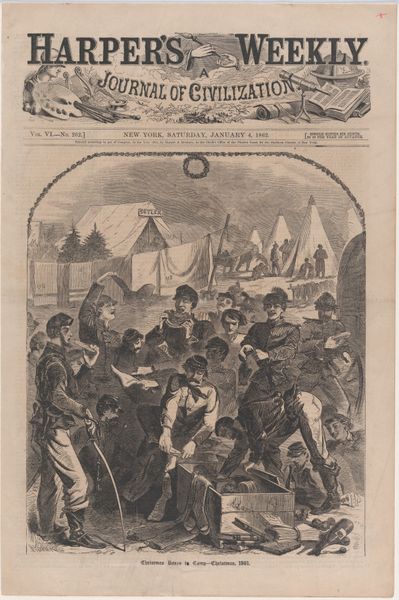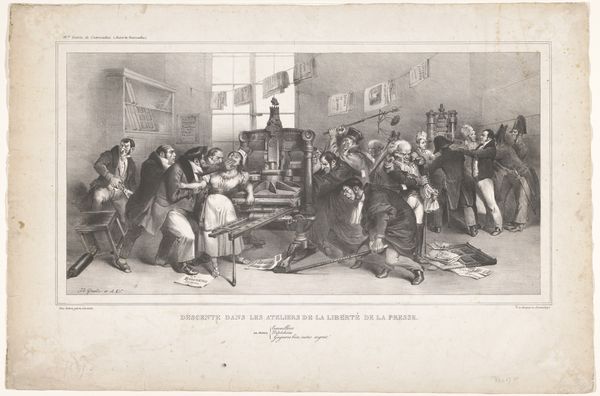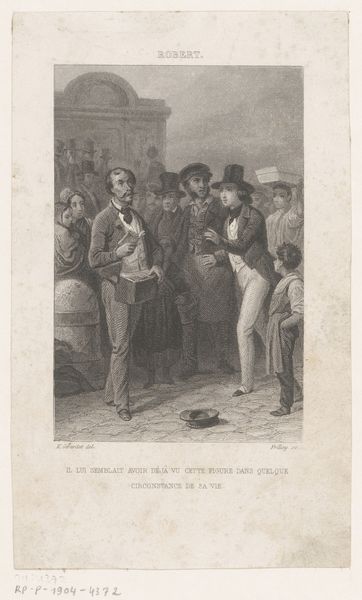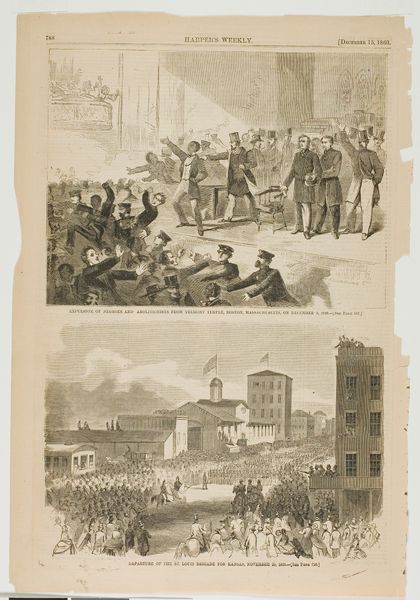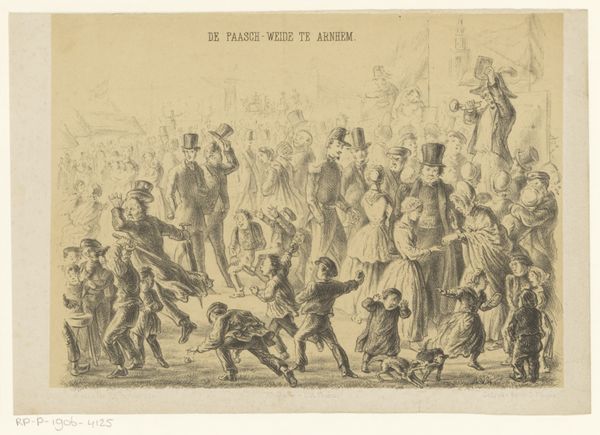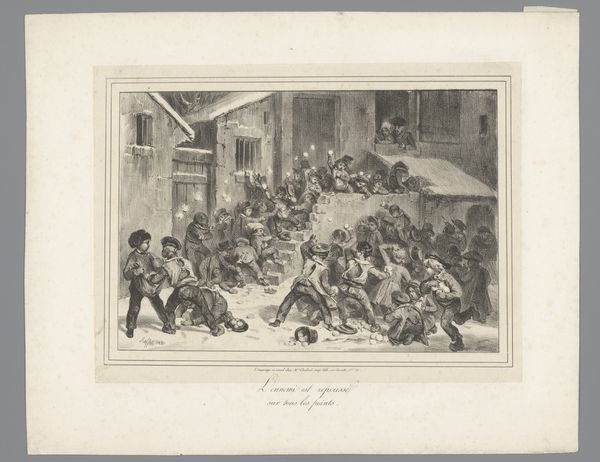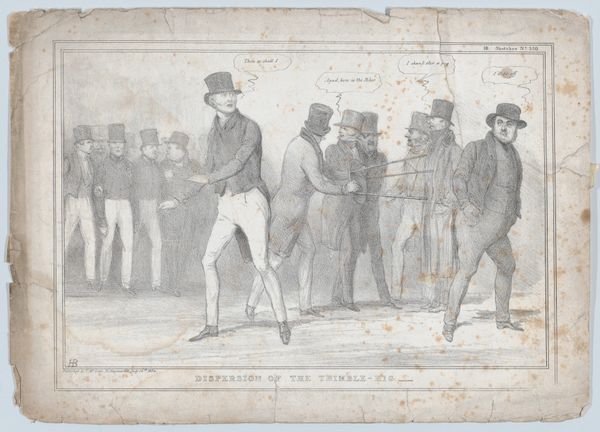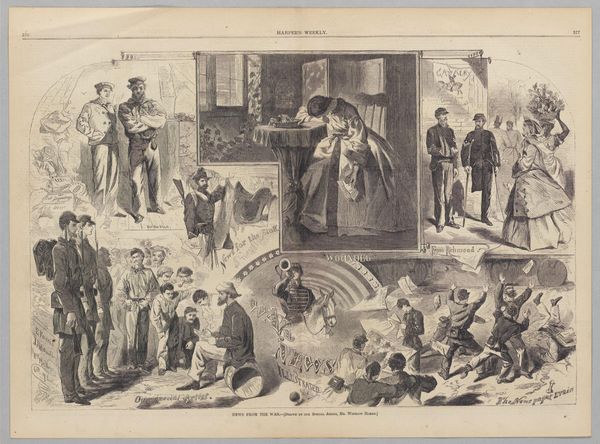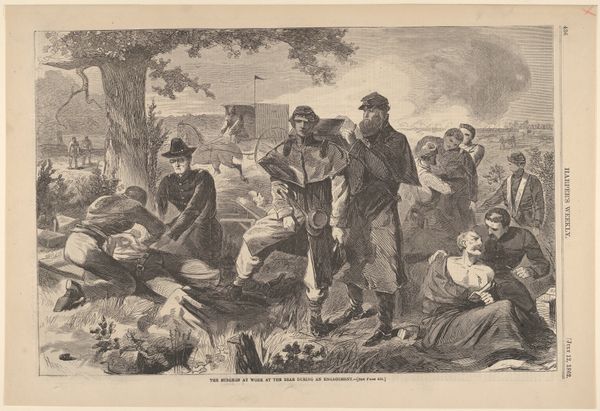
Expulsion of Negroes and Abolitionists from Tremont Temple 1860
0:00
0:00
Dimensions: 6 15/16 x 9 1/8 in. (17.6 x 23.2 cm)
Copyright: Public Domain
Curator: We’re looking at “Expulsion of Negroes and Abolitionists from Tremont Temple,” a wood engraving by Winslow Homer published in Harper's Weekly in 1860. The scene is charged, violent even. Editor: My first impression is chaos, a stark black and white rendering of figures in motion. The frenetic energy practically jumps off the page. Curator: Indeed. This piece captures a pivotal moment where anti-abolitionist sentiment boiled over in Boston. Homer was documenting a deeply unsettling social reality, the widespread resistance to racial equality, even in the North. Editor: The use of engraving as a medium feels particularly relevant here. This wasn't a painting for the elite, it was mass produced, circulated in a widely read publication. We’re talking about bringing a contentious political moment directly to the breakfast tables of ordinary citizens. It's a powerful tool to affect social discourse, but also to shape it and, perhaps, to coarsen it. Curator: Precisely! The accessibility of the image is crucial to understanding its purpose. And consider Tremont Temple itself. A space associated with progressive causes, used to host abolitionist meetings, became a site of such aggressive exclusion. Editor: And that expulsion seems so physical. Note the dramatic falls, the raised arms. The level of craftsmanship and the printing press allowed Homer to convey a clear emotional impact about that specific historical reality. And it highlights something more persistent: class antagonism, race-based division and so forth. These aren’t ephemeral ideas, these things happen because somebody makes them. Curator: And somebody disseminates images like these to reinforce particular viewpoints. Harper’s Weekly positioned itself as a national publication during a time of intense division leading up to the Civil War. Homer’s visuals are, in many ways, doing as much cultural work as the editorials found elsewhere in the paper. Editor: Looking at it today, it prompts questions about visual culture: what is amplified, what is ignored, who owns the means of representation? A fascinating work on so many levels, even though its existence represents the reproduction of ideologies that cause oppression and grief. Curator: A grim, but insightful, observation, I agree completely. Homer forces us to confront the complexities and contradictions within American history.
Comments
No comments
Be the first to comment and join the conversation on the ultimate creative platform.

